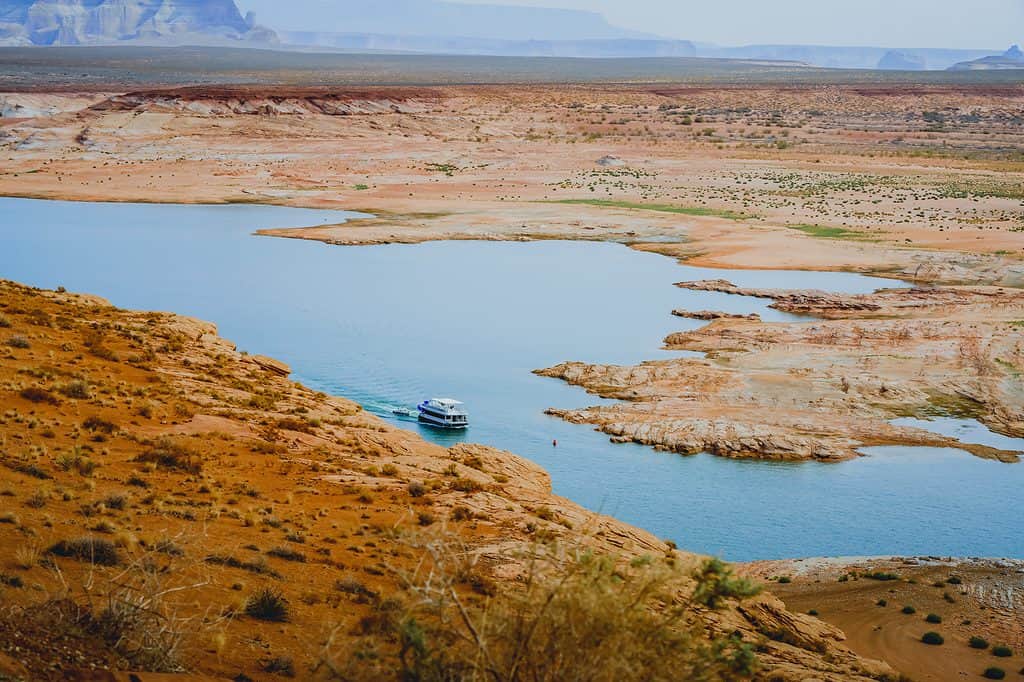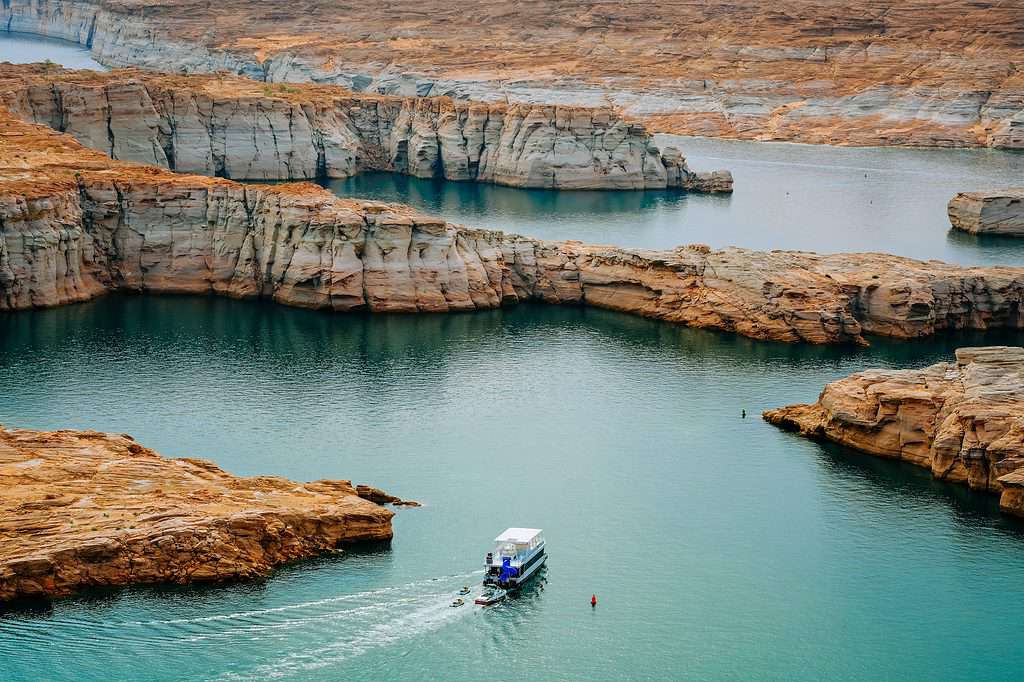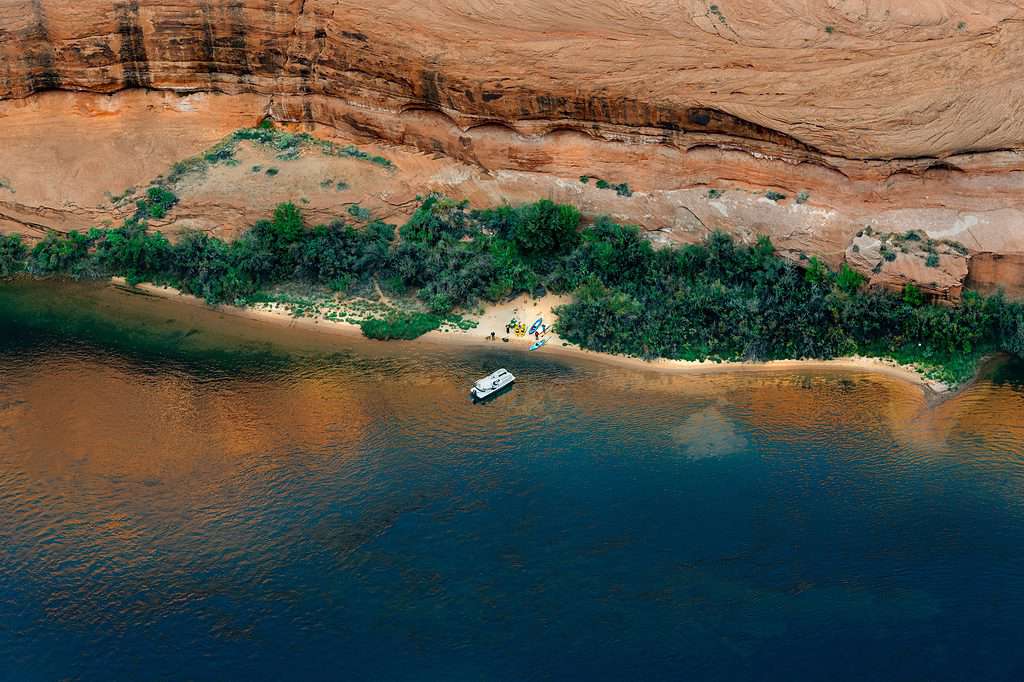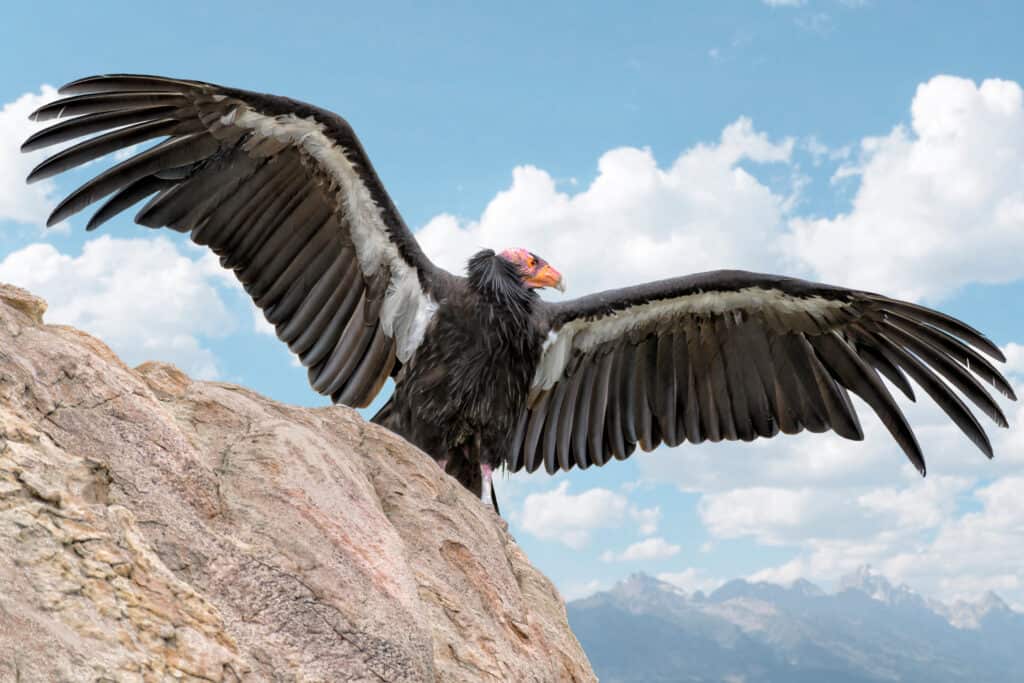Utah has many artificial lakes. In fact, this state is home to some of the largest reservoirs and dams in the world. The largest is Lake Powell which used to be the second largest artificial lake in the United States, after Lake Mead. However, in recent years, Lake Mead has fallen several times behind Lake Powell regarding depth, water volume, and surface area. Keep reading to learn everything you need to know about Lake Powell!

History of Lake Powell, the Biggest Reservoir in Utah
Lake Powell is one of the largest artificial lakes in the world, spanning 186 miles of Glen Canyon. It is one of Utah’s hottest vacation destinations, with more than two million visitors visiting its shores yearly.
The lake was created in 1963 as part of the Glen Canyon Dam project. The Glen Canyon Dam holds back the waters of the Colorado River, resulting in the waters forming Lake Powell. The lake was named after the famous explorer John Wesley Powell. Powell pioneered the exploration of Glen Canyon in the 1860s.
The planning for Lake Powell began in the 1940s and 1950s. During this time, the U.S. Bureau of Reclamation planned to build several dams along the Colorado River. The dams were to be located in the Colorado Plateau province of Colorado, Utah, and Arizona.

Lake Powell is the largest reservoir in Utah.
©HannaTor/Shutterstock.com
Lake Powell’s Dam
The dam that now contains the waters of Lake Powell was intended to be constructed in Echo Park. However, the initially selected location is now the home of the Dinosaur National Monument in Colorado. A small but influential group of political lobbyists led by David Bower of the Sierra Club opposed the dam’s construction. The Sierra Club successfully lobbied the natural and scenic qualities of Echo Park as being too valuable to submerge.
Thus, the construction was changed to the Glen Canyon Dam, which was built to solve downstream delivery obligations of the Upper Basin states by creating an “aquatic bank” to fulfill the “Compact Calls” of the Lower Basin states.
The construction began on October 1, 1956. The project was spearheaded by President Dwight D. Eisenhower, initiating the first demolition blast from his desk in the Oval Office. The first blast cleared several tunnels for water diversion. By February 11, 1959, water diversion was complete, and dam construction could begin. Later that year, the government completed the construction of a bridge that allowed trucks to bring supplies and materials for dam construction to the site. Construction of the town of Page, Arizona, was also initiated at this time.
Concrete placement for the dam began on June 17, 1960. After that, concrete was placed 24 hours a day, seven days a week, until September 13, 1963, when the last bucket of concrete was poured onto the dam. The dam cost $155 million, and 18 people died in the construction.
From 1970 through 1980, construction began installing turbines and generators that allowed the Glen Canyon Dam to produce hydroelectricity. Finally, the dam was dedicated to Lady Bird Johnson, First Lady of the United States, on September 22, 1966.
How Big Is Lake Powell? How Does It Compare to Other Lakes?
Lake Powell is massive. This artificial lake stores up to 25,166,000 acre-feet when it is full, making it just 3,064,000 acre-feet smaller than Lake Mead, the largest artificial lake in America. At total capacity, the water surface elevation of Lake Powell sits at 3,700 feet.
The maximum length of the lake is 186 miles, with a maximum width of 25 miles. The lake’s surface area is 161,390 acres, around 254.1 square miles. Lake Powell has an average depth of 132 feet and a maximum depth of 583 feet. Finally, the lake has approximately 1,900 miles of shoreline, making it an excellent tourist destination for lakegoers.
The surface of Lake Powell is pretty gargantuan. It’s a bit larger than Lake Mead, though Lake Mead has a larger holding capacity than Lake Powell. However, Lake Powell is entirely dwarfed by other lakes in the United States, such as the Great Lakes (though perhaps that was pretty obvious as they are considered “great”).

Lake Powell stores upward of 25 million acre-feet when full.
©HannaTor/Shutterstock.com
The Flora of Lake Powell: What Kind of Plants Grow Near Lake Powell?
There are two main types of flora you’ll find in the Glen Canyon Recreation Area. These are hanging gardens and vascular plants. As Glen Canyon sits in a desert, the flora you find in the area are hardy and can withstand heat and lack of water. However, the vegetation you see in the area is influenced strongly by the location, which can change the soil composition and water availability. Thus, you end up with a stark contrast of lush hanging gardens fed by the springs compared to the low-growing shrubs of the clay badlands.

Glen Canyon has a lot of gorgeous flora.
©HannaTor/Shutterstock.com
Hanging Gardens
The hanging gardens of Glen Canyon are gorgeous green gardens that grow along the cliff faces of Glen Canyon. The plants are fed by the upstream springs, allowing lush greenery to grow in the harsh deserts of Glen Canyon. As a result, many mosses, lichens, and algae populate Glen Canyon’s cliff faces.
Hanging gardens typically grow into little “glens” where the area is cooler and moister than the surrounding deserts. They’re named after the hanging gardens of Babylon, where plants were artificially grown on walls and roofs to provide gorgeous vegetation views to the populous.
The glens of Glen Canyon are supplied by a local aquifer fed mainly by winter precipitation. The water moves down through porous rocks and cracks in the cliff faces, feeding the plant life that grows along the cliff walls.
Vascular Plants
Any plant growing along the canyon that is not a moss, lichen, algae, or fungus is considered a vascular plant. Vascular plants have networks of veins, moving water through the plant, thus the name. Non-vascular plants, such as the ones in the hanging gardens, absorb water and nutrients using a membrane rather than veins.
Herbaceous plants are by and far the most common vascular plants in Glen Canyon. A study documenting the canyon flora found that 53% of the vascular plants were perennial herbs, 26% were annual herbs, and 3% were biennial herbs. Only 13% of the plants found in the study were shrubs, and just 2.5% were succulent shrubs and trees. Cacti don’t typically grow in this area because it’s too cold.
Over 90 plant families are found in the Glen Canyon National Recreation Area (NRA). Among those, the most common five plant families found are the aster family (Asteraceae), grass family (Poaceae), pea family (Fabaceae), mustard family (Brassicaceae), and goosefoot family (Chenopodiaceae).
Fauna of the Glen Canyon: What Animals Are Found Near Lake Powell?
Lake Powell is home to hundreds of animal species, including reptiles, birds, fish, and mammals. The park rangers around Lake Powell recommend you keep an eye on the ground when hiking or walking near Lake Powell. There are many small reptile species that you might accidentally stumble upon and get bitten by if you don’t. These species include some dangerous reptiles. So, remember to look out for any scaly friends you need to steer clear of when you’re out there.
Birdwatchers also have an excellent variety of birds to watch at Lake Powell. Lake Powell is home to over 315 bird species, including herons, owls, eagles, and ducks. The lake also has a partnership with Cornell’s Lab of Ornithology, allowing you to check out which birds are most common in the area online before you even set foot in the park!
Lake Powell is also an excellent destination for fishermen. The lake is home to smallmouth bass, largemouth bass, striped bass, walleyes, channel catfish, crappies, and bluegills, among other fish. Tons of endangered fish also live in the lake for you to observe. Just make sure you don’t catch and keep any endangered fish!
Finally, several large mammal species live in the area, such as coyotes, bighorn sheep, and bobcats. However, these animals tend to steer clear of humans. So, you might not see them as readily as some other creatures you share the space with. However, if you’re quiet, you might see some!

California condors are just one bird that calls Glen Canyon home.
©Barbara Ash/Shutterstock.com
Final Thoughts
The Glen Canyon area is an excellent destination whether you’re looking for boating, hiking, or simply enjoying some sun. This area is home to many flora and fauna species, making it a wonderful place to explore and learn about. We hope you’ve learned a little about the world around us from our article. If you liked what we had to say, drop us a comment or share our article! We love to hear reader feedback!
Where Is the Glen Canyon Located on a Map?
The Glen Canyon National Recreation Area is a protected area managed by the National Park Service in the United States. It includes the region surrounding Lake Powell and the lower Cataract Canyon, covering an area of 1,254,429 acres. Rough and dry high desert landscapes mainly characterize it and serves as both a recreational area and a conservation unit.
Here is The Glen Canyon Dam on a map:
The photo featured at the top of this post is © HannaTor/Shutterstock.com
Sources
- Bluff, Utah, Available here: https://bluffutah.org/lake-powell/
- Wikipedia, Available here: https://en.wikipedia.org/wiki/Lake_Powell
- Wikipedia, Available here: https://en.wikipedia.org/wiki/Lake_Mead
- National Park Service, Available here: https://www.nps.gov/glca/learn/nature/plants.htm
- National Park Service, Available here: https://www.nps.gov/glca/learn/nature/hanginggardens.htm
- National Park Service, Available here: https://www.nps.gov/glca/learn/nature/vascularplants.htm
- Lake Powell, Available here: https://www.lakepowell.com/discover/nature-wildlife/
- Lake Powell, Available here: https://www.lakepowell.com/things-to-do/fishing/
FAQs (Frequently Asked Questions)
Where is Lake Powell?
Lake Powell is located in Northern Arizona and Southern Utah.
When was Lake Powell constructed?
Lake Powell’s construction began in 1956 and ended in the 1980s.
Is Lake Powell man-made?
Yes, Lake Powell is an artificial lake.
How big is Lake Powell?
Lake Powell is 254.1 square miles and has a holding capacity of 25,166,000 acre-feet.
What is the biggest man-made lake in America?
The biggest artificial lake in America is Lake Mead. However, Lake Mead has fallen behind Lake Powell in size several times over the past few years.
Thank you for reading! Have some feedback for us? Contact the AZ Animals editorial team.






